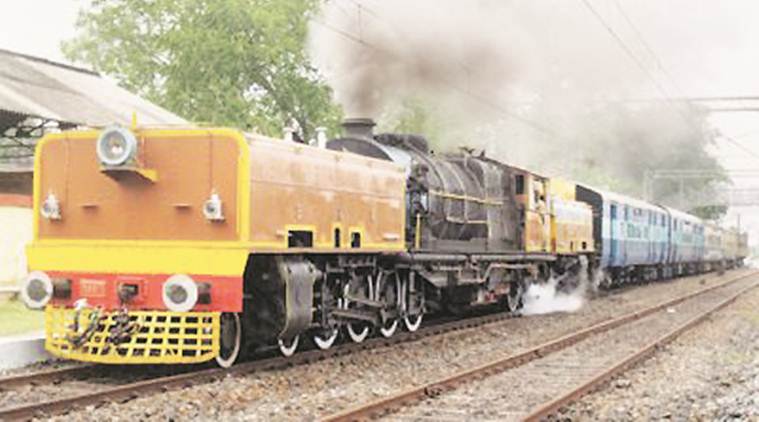 Beyer Garratt steam locomotive.
Beyer Garratt steam locomotive.
Known as one of the largest and most powerful railway engines in the world in its class, a rare Beyer Garratt steam locomotive has quietly been brought back to life at a workshop in Kharagpur, West Bengal, with four months of work and a little bit of “reverse engineering”. On Saturday, it was trialled on the 22 km of the main line in South Eastern Railway between Kharagpur and Midnapore. This 1929-born broad gauge Garratt locomotive is touted as a “mighty beast” by railway enthusiasts and officials alike. Once commissioned again for commercial runs, Indian Railways will get a shot at another Guinness World Record, officials said.
Invented by Beyer, Peacock and Company in 1907, Garratt engines were a technological revolution in steam engine articulation back in the day. They burnt coal on both sides of the boiler instead of one, providing what can be simply explained as double-barrell power.
The Garratts were a prized possession for railways across the world. The erstwhile Bengal Nagpur Railway had 32 Garrats, while Darjeeling Himalayan Railway had a few, but narrow gauge. In other words, the Garratts espoused tractive power the kind of which was later standardised by diesel and electric engines.
When in service for 40 years in the BNR (later South Eastern Railway), this “N-class” Garratt had the capacity to run at 72 kmph uphill pulling 2,500 tons of load. Its working speed, without load, was 128 kmph on plains. On Saturday, it ran at 30 kmph and indicated to engineers that minor repairs are needed.
It has 24 wheels, with a “4-8-0+0-8-4” arrangement, considered rare as only 26 Garratt engines with this wheel arrangement were manufactured. Weighing 230 tons, the humungous machine carries 10,000 gallons of water and 14 tons of coal. This one has coal fire rendering on both ends with the boiler in the middle. As a result, it runs on both directions, without needing to be reversed.
“It was the heavy haul engine of those times. When it is inducted back, it will be a world record, being the largest, most powerful in the world working in main line,” M S Rangaswamy, who is advising the team in Kharagpur to revive the locomotive, said on Friday. Rangaswamy, a former engineer in Southern Railway, led the team that revived Fairy Queen, the oldest steam locomotive, in 1998. “The Fairy Queen is a toy in front of this Garratt,” he said.
Standing as a display item at the Kharagpur workshop since its retirement 50 years ago, it was revived for a single, ceremonial “heritage run” between Shalimar and Mecheda near Kolkata in 2006. This time, the intent is to commission it as a regular heritage train.
A team of engineers travelled to Delhi’s National Rail Museum earlier this year to take vital parts off another Garratt engine on display. “We replicated those parts. Made the drawings from scratch. Manufactured the brass safety valves,” Kumar said.